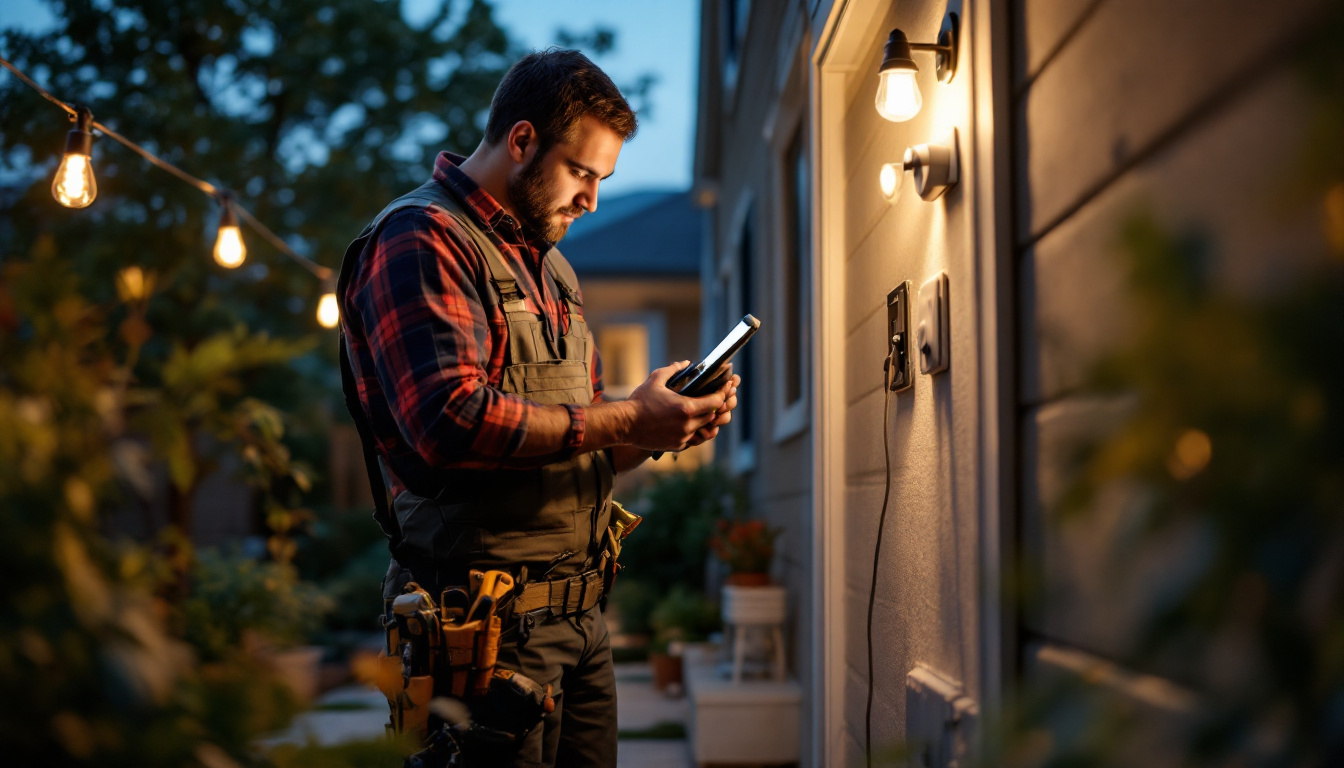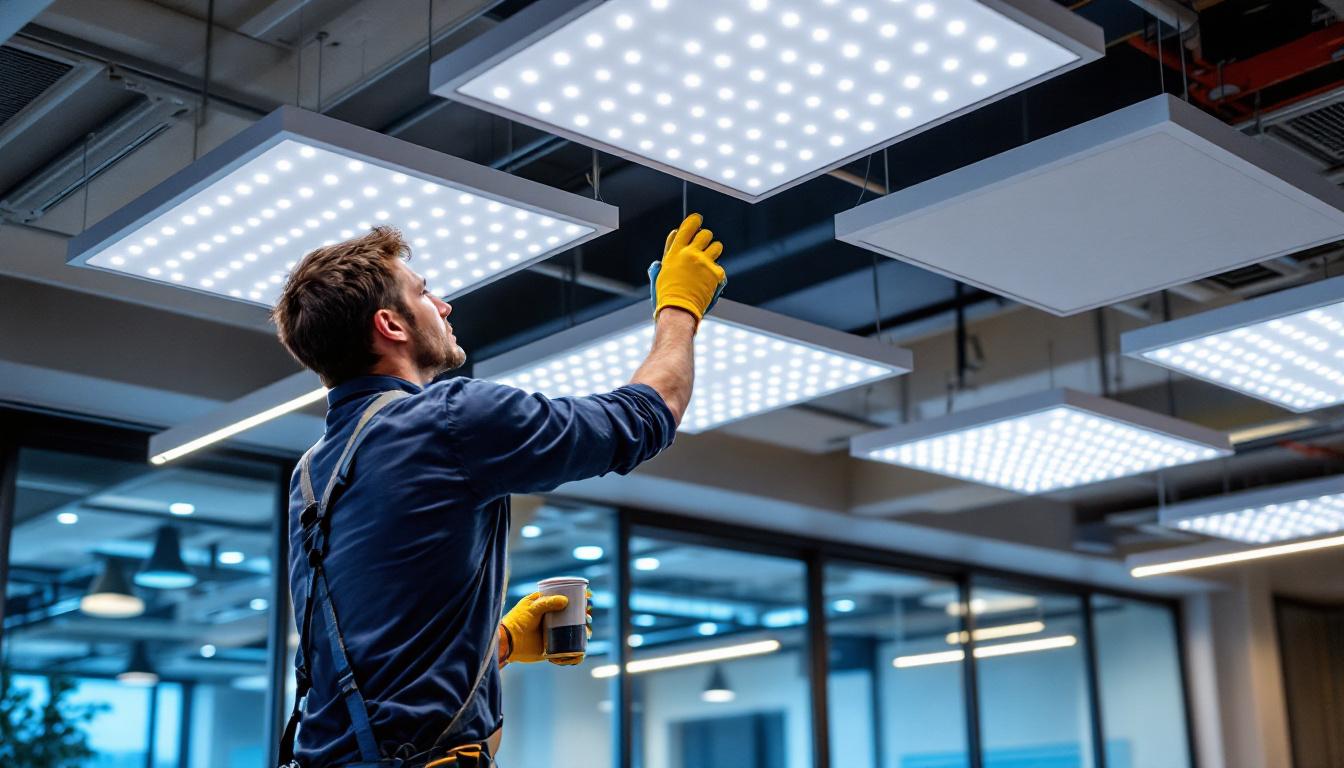
Compliance in the lighting industry encompasses a wide range of regulations and standards that ensure safety, efficiency, and quality in lighting installations. For lighting contractors, understanding these compliance requirements is not just a legal obligation but also a critical factor in maintaining a competitive edge in the market. Compliance can affect everything from the design phase to the final installation and maintenance of lighting systems.
Various organizations and government bodies establish these compliance standards, which can vary by region and project type. Familiarity with local, national, and international regulations is essential for lighting contractors to navigate the complexities of compliance effectively. This article aims to provide an overview of key compliance areas that lighting contractors should be aware of to ensure their projects meet all necessary requirements.
Several key organizations set the standards that govern lighting installations. The International Electrotechnical Commission (IEC), the American National Standards Institute (ANSI), and the Illuminating Engineering Society (IES) are among the most prominent bodies. Each of these organizations provides guidelines that cover various aspects of lighting, including energy efficiency, safety, and environmental impact.
In addition to these international standards, local building codes and regulations must also be adhered to. These codes can dictate specific requirements for lighting fixtures, installation methods, and energy consumption. It is crucial for contractors to stay updated on these regulations to avoid potential legal issues and project delays. Furthermore, many municipalities have begun to implement their own sustainability initiatives, which may impose additional compliance requirements. Being proactive about understanding these local initiatives can not only enhance a contractor’s reputation but also open doors to new business opportunities, as clients increasingly seek environmentally responsible solutions.
Energy efficiency is a significant focus within the realm of lighting compliance. Many regions have adopted strict energy codes that mandate the use of energy-efficient lighting solutions. This not only helps in reducing energy consumption but also contributes to sustainability efforts and lowers operating costs for clients.
Lighting contractors must be knowledgeable about energy-efficient technologies, such as LED lighting, which often meets or exceeds compliance requirements. Understanding the benefits and limitations of these technologies can help contractors make informed decisions when designing lighting systems that comply with energy standards. Moreover, staying abreast of advancements in smart lighting technologies, which incorporate sensors and automation to optimize energy use, can further enhance a contractor’s service offerings. As the demand for smart buildings rises, integrating these technologies into compliance strategies can position contractors as leaders in the industry, capable of delivering innovative solutions that not only meet but exceed client expectations.
While compliance is essential, it can also present various challenges for lighting contractors. Navigating the myriad of regulations and ensuring that all aspects of a project meet these standards can be daunting. Here are some common challenges that contractors may face:
Regulations in the lighting industry are continuously evolving, often in response to advancements in technology or shifts in energy policy. For contractors, this means that staying informed about changes in compliance requirements is a constant task. Failure to keep up with these changes can lead to non-compliance, which can result in fines, project delays, or even legal action.
To mitigate this challenge, contractors should invest time in ongoing education and training. This can include attending industry seminars, subscribing to relevant publications, and participating in professional organizations that focus on lighting and compliance. Additionally, establishing a network of peers can provide valuable insights into best practices and emerging trends, allowing contractors to stay ahead of the curve and adapt their strategies accordingly.
Another significant challenge is the need for thorough documentation and record-keeping. Compliance often requires extensive documentation to demonstrate that all aspects of a project meet regulatory standards. This can include everything from design plans and installation records to maintenance logs and energy usage reports.
Implementing an organized system for documentation can help contractors streamline this process. Utilizing digital tools and software can simplify record-keeping, making it easier to access and manage compliance-related documents. Furthermore, adopting a proactive approach to documentation can enhance project efficiency. By regularly updating records and conducting internal audits, contractors can identify potential compliance issues before they escalate, ensuring smoother project execution and fostering a culture of accountability within their teams.
In addition to federal regulations, contractors must also navigate a complex landscape of local codes and standards that can vary significantly from one jurisdiction to another. These local regulations may dictate specific requirements for energy efficiency, safety measures, and even aesthetic considerations in lighting design. For contractors operating in multiple regions, this can create a challenging environment where a one-size-fits-all approach is not feasible.
To address this challenge, contractors should establish strong relationships with local authorities and building inspectors. Engaging with these stakeholders early in the project can provide clarity on local requirements and help avoid costly rework. Furthermore, leveraging local expertise can enhance the contractor’s reputation within the community, as they demonstrate a commitment to adhering to local standards and contributing to the overall safety and well-being of the areas they serve.
To navigate the complexities of compliance successfully, lighting contractors can adopt several best practices. These practices not only help ensure compliance but also enhance the overall quality of lighting projects.
Before commencing any project, it is essential to conduct a thorough assessment of the site and its specific compliance requirements. This includes evaluating existing infrastructure, understanding local codes, and identifying any potential challenges that may arise during installation.
By conducting these assessments early in the project, contractors can develop a comprehensive plan that addresses compliance from the outset, minimizing the risk of issues arising later in the process.
Engaging with compliance experts or consultants can provide invaluable insights into navigating the regulatory landscape. These professionals can offer guidance on the latest standards, assist with documentation, and help identify potential compliance pitfalls.
Collaborating with experts can also enhance the credibility of a contractor’s work, as clients often appreciate the assurance that industry standards are being met or exceeded. This can lead to increased trust and potentially more business opportunities.
Technology plays a pivotal role in enhancing compliance within the lighting industry. From advanced design software to smart lighting solutions, technology can simplify compliance processes and improve project outcomes.
Modern design software allows contractors to create detailed lighting plans that adhere to compliance standards. These tools often include built-in compliance checks that can automatically flag potential issues, ensuring that designs meet all necessary regulations before installation begins.
By leveraging these technologies, contractors can save time and reduce the risk of errors, ultimately leading to smoother project execution and higher client satisfaction.
Smart lighting systems offer not only enhanced functionality but also improved compliance capabilities. Many smart lighting solutions are designed to optimize energy usage, automatically adjusting based on occupancy or natural light levels. This adaptability can help projects meet energy efficiency standards more easily.
Furthermore, smart lighting systems often come equipped with monitoring tools that track energy consumption and performance, providing valuable data that can be used to demonstrate compliance over time. This data can also assist in ongoing maintenance and optimization efforts.
Continuous training and professional development are critical for lighting contractors aiming to stay compliant in an evolving industry. Investing in education not only enhances individual skills but also strengthens the overall competency of a contracting team.
Regularly attending workshops, webinars, and industry conferences can help contractors stay informed about the latest trends and compliance requirements. These events often feature expert speakers who share insights into emerging technologies and regulatory changes, providing contractors with the knowledge they need to remain competitive.
Additionally, participating in online forums and discussion groups can facilitate knowledge sharing among peers, allowing contractors to learn from each other’s experiences and best practices.
Many organizations offer certification programs that focus on compliance and best practices in the lighting industry. Obtaining these certifications can enhance a contractor’s credibility and demonstrate a commitment to quality and compliance.
Moreover, certification programs often cover essential topics such as energy efficiency, safety standards, and regulatory requirements, equipping contractors with the knowledge needed to navigate compliance challenges effectively.
The future of compliance in the lighting industry is likely to be shaped by ongoing advancements in technology, changes in regulations, and an increasing emphasis on sustainability. As the industry evolves, contractors must be prepared to adapt to these changes to ensure they remain compliant and competitive.
As new technologies continue to emerge, compliance standards will likely evolve alongside them. For instance, the rise of smart cities and connected lighting systems may lead to new regulations regarding data privacy and energy consumption. Contractors must stay informed about these developments to ensure their projects meet future compliance requirements.
Additionally, advancements in lighting design and manufacturing techniques may also influence compliance standards. Contractors should be proactive in understanding how these changes can impact their work and be prepared to adjust their practices accordingly.
With growing awareness of environmental issues, there is an increasing focus on sustainability within the lighting industry. Compliance standards are likely to reflect this shift, with more stringent requirements for energy efficiency and environmental impact.
Contractors who prioritize sustainable practices and stay ahead of compliance trends will not only meet regulatory requirements but also appeal to environmentally conscious clients. This can lead to new business opportunities and a stronger reputation in the market.
Compliance is a critical aspect of the lighting industry that requires ongoing attention and effort from contractors. By understanding the various regulations, adopting best practices, and leveraging technology, lighting contractors can navigate compliance challenges effectively. Continuous training and development will further enhance their ability to meet evolving standards and maintain a competitive edge.
As the industry continues to change, staying informed and adaptable will be key to ensuring compliance and delivering high-quality lighting solutions that meet client needs. Embracing these principles will not only benefit contractors but also contribute to a safer, more efficient, and sustainable lighting industry overall.
Ready to elevate your lighting projects while adhering to the highest compliance standards? Look no further than LumenWholesale for all your lighting needs. Our spec-grade lighting products not only meet but exceed industry regulations, ensuring that your installations shine with reliability and performance. Say goodbye to inflated markups and hello to unbeatable wholesale prices, free shipping, and the convenience you deserve. Make the smart choice for your business and explore our wholesale lighting options at the best value today. Your projects—and your clients—will thank you.

Discover the key challenges lighting contractors face when installing motion lights, from technical hurdles to client expectations.

Discover how LED ceiling panels are revolutionizing the lighting industry, offering contractors enhanced efficiency, energy savings, and innovative design possibilities.

Discover essential tips for selecting LED high bay lamps and learn how to sidestep common pitfalls in lighting projects.

Discover the essential insights lighting contractors need to meet client expectations with recessed lighting inserts.